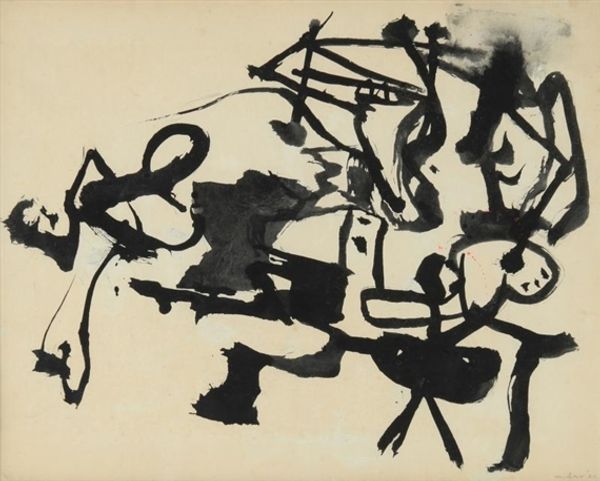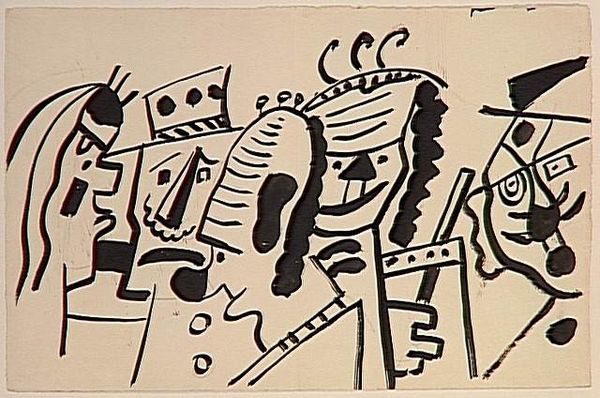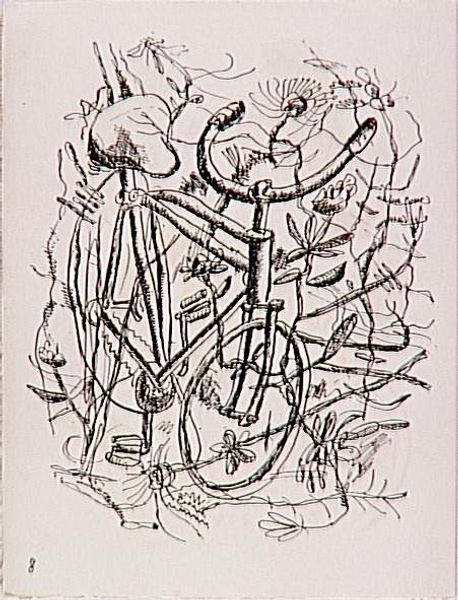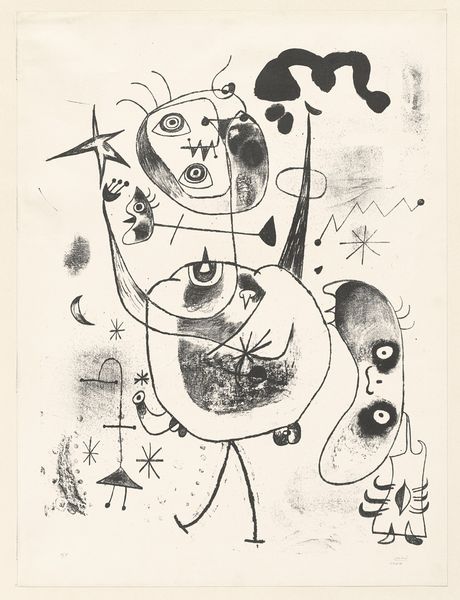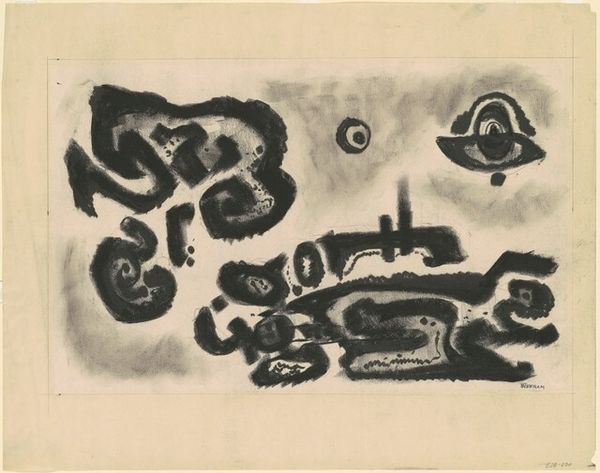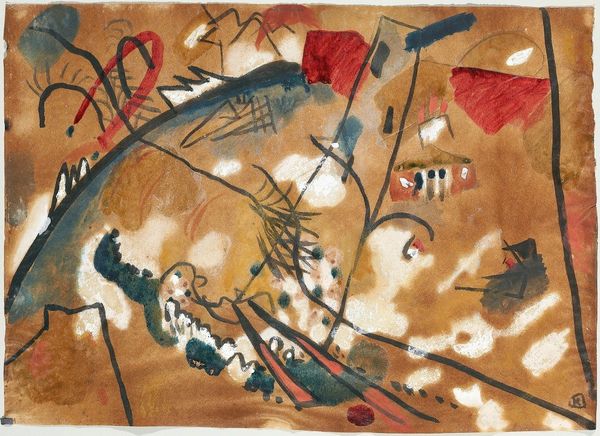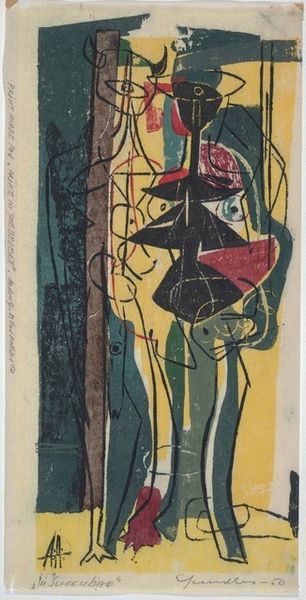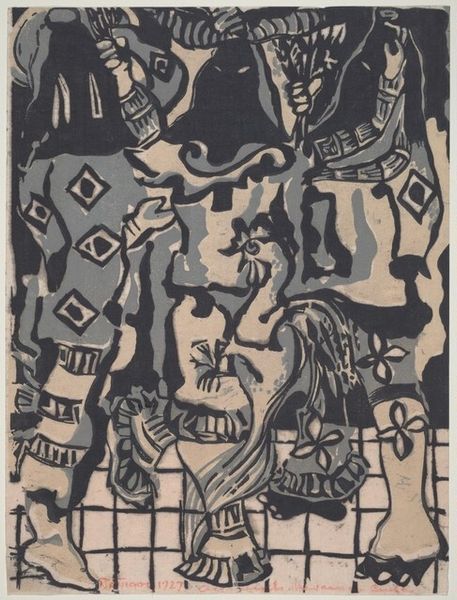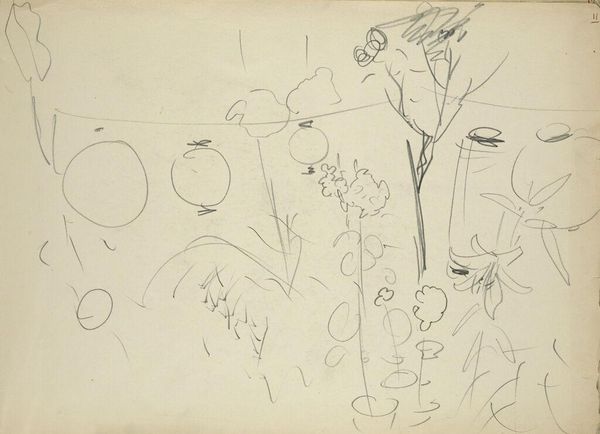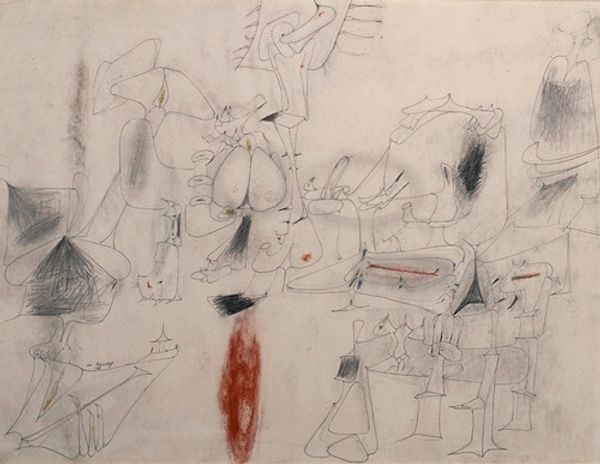
Copyright: Willi Baumeister,Fair Use
Curator: Immediately I feel a sense of playful, childlike expression. Is it an uncontrolled unleashing, perhaps? Editor: We're looking at Willi Baumeister’s “Primordial Figures,” created in 1947 using ink and drawing techniques. This piece emerged in a very specific post-war historical context. Curator: It strikes me that it is so telling of this period in history with its raw execution. What sort of labor processes and available materials were common in 1947 that might have affected this specific image? Editor: Well, the limitations of postwar materials in Germany undeniably had an impact. Often artists like Baumeister turned to more readily available and inexpensive materials like ink and paper. And that shift echoes a turn in thinking about what constitutes "fine art," particularly drawing in the aftermath of such massive destruction and loss. It can become about documentation and exploration. Curator: This connects profoundly to wider issues concerning institutional patronage, then. If we can observe it today in a museum, how has its meaning evolved when we look at "Primordial Figures" now, within the setting of, perhaps, this exhibition itself? What statements does this work make concerning the reconstruction of artistic culture following years marked by strict artistic constraints? Editor: The work’s current location as part of an art museum’s exhibition challenges conventional art standards as a way for the institution to question high and low culture. That location also enhances the work’s symbolism by bringing into question notions of representation that developed in German Expressionism through postwar, modern form. Curator: It definitely shows how visual components convey a multitude of significances across historical moments and material scenarios. It makes one wonder, how will subsequent historical settings read into this artwork? Editor: Indeed, time is just another raw material acting upon art’s ever-evolving story and setting! It reminds us of art’s capacity to absorb and mirror social transformation over time.
Comments
No comments
Be the first to comment and join the conversation on the ultimate creative platform.
